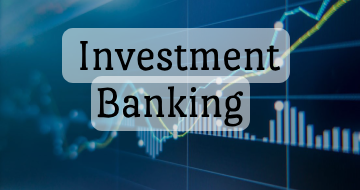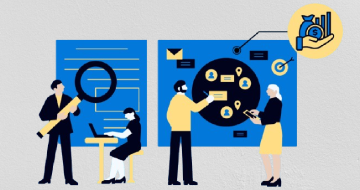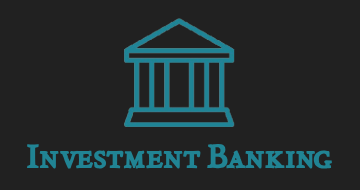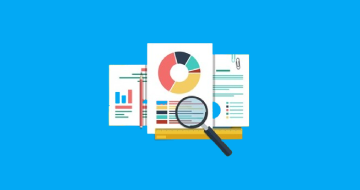IIRF Online > Finance & Accounting > Finance > Investment Banking > The Complete Investment Banking Course 2024
The Complete Investment Banking Course 2024 by Udemy
The #1 Course to Land a Job in Investment Banking. IPOs, Bonds, M&A, Trading, LBOs, Valuation: Everything included!
Course Highlights
- Start a career in Investment Banking or Private Equity
- Pass investment banking interviews
- Build financial models from scratch (shown step-by-step)
- Build valuation models – DCF, LBO and multiples
- Have solid financial and business acumen
- Take your career to the next level!
- Tell the story of how investment banking services first appeared
- Understand the difference between investment and commercial banking
- Explain the mechanics of an Initial Public Offering
- Understand how pricing is determined in an IPO
- Draw an IPO timetable
- Understand why companies go public
- Explain the mechanics of a bond offering
- Understand how pricing is determined in a bond offering
- Draw a bond offering timetable
- Understand why companies raise public debt
- Explain loan syndication and who participates in the syndicate
- Understand securitization and explain why banks use securitization
- Learn why companies buy other companies
- Identify successful M&A transactions
- Explain the deal lifecycle
- Tell the difference between Financial and Corporate buyers
- Describe the different payment options in an M&A deal
- Understand the essence of restructuring services
- Learn about the different ways to restructure a company
- Become familiar with trading and brokerage and the securities traded on Financial Markets
- Understand asset management services
- Be able to describe asset management vehicles and expected rates of return
- Calculate a company’s cost of debt, cost of equity, and WACC
- Perform LBO valuation
- Understand the rationale behind Leveraged Buyout deals
- Be able to tell who carries out LBO deals and why they can be very profitable
- After this course, you will have the skills to start a successful career in Investment Banking and Corporate Finance
Skills you will learn!
Curriculum
2 Topics
What does the course cover?
Download all course materials
8 Topics
The importance of history name tradition and reputation
The rise of investment banking services
What is the difference between commercial and investment banking?
Why do universal banks have a competitive advantage?
Intrinsic conflicts of interest and the role of Chinese walls
Quiz #1
Historical M&A waves
Three of the most important IPOs in history
5 Topics
Capital markets – raising equity and debt capital
Advisory – M&A and Restructuring services
Trading and Brokerage – trading with financial securities
Asset management – the ability to use money to make more money
Quiz #2
3 Topics
Strategies pursued by investment banks
Relationship vs transaction-based banking
The accidental investment banker - Book recommendation
15 Topics
Why would a company want to go public?
Who are the investors in an IPO?
Coming up with a share price
Technical details of IPO pricing
IPO share allocation
What does an IPO timetable look like?
The IPO syndicate – members and responsibilities
Fee distribution among investment banks
Post-IPO stabilization: Definition of long/short position
Post-IPO stabilization: Applying the Greenshoe option
Greenshoe explained – Practical example
Other ways to place equity capital – SEOs and private placements
Facebook's IPO - Case study
Course Challenge #1 - IPO
Quiz #3
11 Topics
The four different types of bonds
Why issue a bond?
The mechanics of a bond offering. Process description
Junk bonds
What is securitization and why can it be useful?
Securitization - explained
Asset-backed securities: An example of securitization
Loan syndication – a preferred instrument for most banks nowadays
Project finance
Course challenge #2 - Debt offerings
Quiz #4
11 Topics
Why acquire another company?
Describing the typical deal lifecycles and buyer companies
The three types of M&A processes
M&A private deals
M&A auctions
M&A of listed firms
Valuation of target companies
Payment options in M&A deals
Financial vs. Corporate buyers
Course challenge #3 - M&A
Quiz #5
4 Topics
Restructuring services – why and when
Prioritization of restructuring efforts
Course Challenge #4 - Restructuring
Quiz #6
5 Topics
The Trading and Brokerage division
Types of securities traded
Proprietary trading vs principal investments
The advent of algorithmic-driven trading
Quiz #7
4 Topics
Why hire Investment banks as asset managers?
A risk-return comparison of different investments
Private equity funds
Quiz #8
12 Topics
Why value a company?
How much is a company worth for an investor?
The two variables that drive a firm’s value
The mechanism of Unlevered cash flow calculation
Introducing a discount factor – Weighted average cost of capital
Calculating a firm's cost of debt
Calculating a firm’s cost of equity
How to find the beta for an unlisted firm?
Estimating a company’s future cash flows
The two stages of a DCF model
Discounting cash flows and terminal value
Calculating enterprise and equity value
11 Topics
What is a financial model?
Why use a financial model?
Inefficient financial modeling practices
Efficient financial modeling practices
Different types of financial models we can build
The right level of detail we should use when building a 5 or 10-year model
The right way to approach the forecasting exercise
Building complete financial models
Forecasting P&L items
Forecasting Balance sheet items (1/2)
Forecasting Balance sheet items (2/2)
4 Topics
How to value a company - Introduction
The stages of a complete DCF Valuation
Let's go through the structure of the DCF model we will create in Excel
A glimpse at the company we are valuing - Cheeseco
5 Topics
Modeling the top line
Building flexible financial models in Excel
Modeling other items: Other revenues and Cogs
Modeling other items: Operating expenses and D&A
Modeling Other Items: Interest expenses Extraordinary items and Taxes
5 Topics
How to forecast Balance Sheet items - the clear and practical way
A key concept for finance practitioners - the "Days" methodology
How to calculate "Days"
How to use "Days" to project the future development of BS items
Forecasting Property plant & equipment Other assets and Other liabilities
4 Topics
Excel best practices! Create a good-looking and clean output sheet in your model
Putting what we learned into practice - Populating the P&L sheet
How to create a clean output Balance Sheet in your Financial Model
Completing the output BS sheet for the historical period
5 Topics
Learn how to calculate Unlevered free cash flows
Important! Reconcile UFCF to Net cash flow
A very useful lesson! Cash flow calculation
Arriving to actual Net cash flow figures and performing a check with cash
A fast and effective way to modify multiple cell references in Excel
2 Topics
Introducing weighted average cost of capital (WACC) and perpetuity growth rate
Learn how to find the present value of future Cash Flows in Financial Models
2 Topics
Calculating Continuing value and Enterprise value of the business
Final steps! Calculating Equity value of the business
3 Topics
Sensitivity analysis for WACC and perpetuity growth
An application of Goal seek
Recap of the financial model with charts and hypothesis testing
31 Topics
Organizing external inputs in a 'Drivers' sheet
The input data we will work with
Forecasting Tesla's expected deliveries
Comparing delivery figures with the ones of industry peers
Estimating an average selling price of Tesla vehicles
Calculating automotive revenue
Peer comparison: Gross profit %
Calculating automotive gross profit
Calculating automotive cost of sales
Forecasting 'energy' and 'services' revenue
Calculating 'energy' and 'services' gross profit and cost of sales
Forecasting operating expenses
Building a fixed asset roll forward: estimating Capex
Building a fixed asset roll forward: D&A schedule
Peer comparison: D&A as a percentage of revenues
Calculating DSO DIO DPO
Producing a clean P&L output sheet
Fill in the P&L output sheet
Calculating investments in working capital
Forecasting Unlevered free cash flow
Forecasting other assets
Forecasting other liabilities
Completing Unlevered free cash flow
Modeling Tesla's financing needs in the forecast period
Calculating Net income
Bridging Unlevered Free cash flow to Net cash flow
Balancing the Balance sheet
Estimating Weighted average cost of capital (WACC)
Performing Discounted cash flow valuation (DCF)
Calculating enterprise value equity value and price per share
Closing remarks
5 Topics
What are valuation multiples and why we use them?
What types of valuation multiples are there?
Trading vs transaction valuation multiples
Main principles of multiples valuation
Comparison of earnings multiples (P/E vs EV/EBITDA)
8 Topics
Introduction to the exercise
High-level assessment of peer companies
Assessment of P&L data - comparable companies
How to adjust EBIT - theoretical framework
How to adjust EV - theoretical framework
How to adjust EBIT - practical example - Volkswagen
How to adjust EV - practical example - Volkswagen
Conclusion of the practical exercise
7 Topics
What is an LBO?
How does an LBO work in practice?
Who are the lenders?
What is debt capacity?
When is an LBO a feasible option?
The LBO price
LBO exit strategies
4 Topics
Intro to the deal
Dell's business from a strategic perspective
Details and information about the deal
The aftermath
9 Topics
Introduction to the model we will build
Establishing the maximum amount of debt that can be used in the transaction
Financial sponsors’ perspective
Forecasting financials until EBIT
The optimal debt structure
Estimating cash flows and debt payments
Completing the model for the period 2018-2021
Calculating Enterprise value and IRR
Performing sensitivity analysis
30 Topics
Case description
Introduction to LBO Modeling exercise
Key drivers in the LBO model
Constructing the Profit and Loss header
Analyzing historical Profit and Loss figures
Valuing the Target company
Estimating transaction fees
Sources and uses of funds
Shaping the Balance sheet at transaction
Goodwill calculation
Integrating assumptions into the Drivers sheet
Building a Fixed asset roll forward schedule
Forecasting financials using the Drivers sheet
Completing the Profit and Loss statement (up to EBITDA)
Modeling Working capital
Filling in the Balance sheet at transaction sheet
Add financials to the Balance sheet
Projecting Fixed asset roll forward
Developing a Debt schedule
Creating a Fixed asset amortization schedule
Structuring Cash Flow
Designing the Financing sheet
Calculating Cash Flow
Building an Equity schedule
Finalizing the Financing Cash Flow
Modeling the Revolver facility (first part)
Completing the Profit and Loss statement
Modeling the Revolver facility (second part)
Balancing the Balance sheet
Exit valuation and IRR comparison
1 Topic
Career guide and frequently asked interview questions
1 Topic
Who Does What in Finance?
1 Topic
Bonus lecture: Next steps
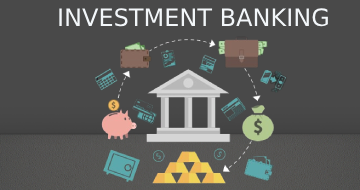
The Complete Investment Banking Course 2024





